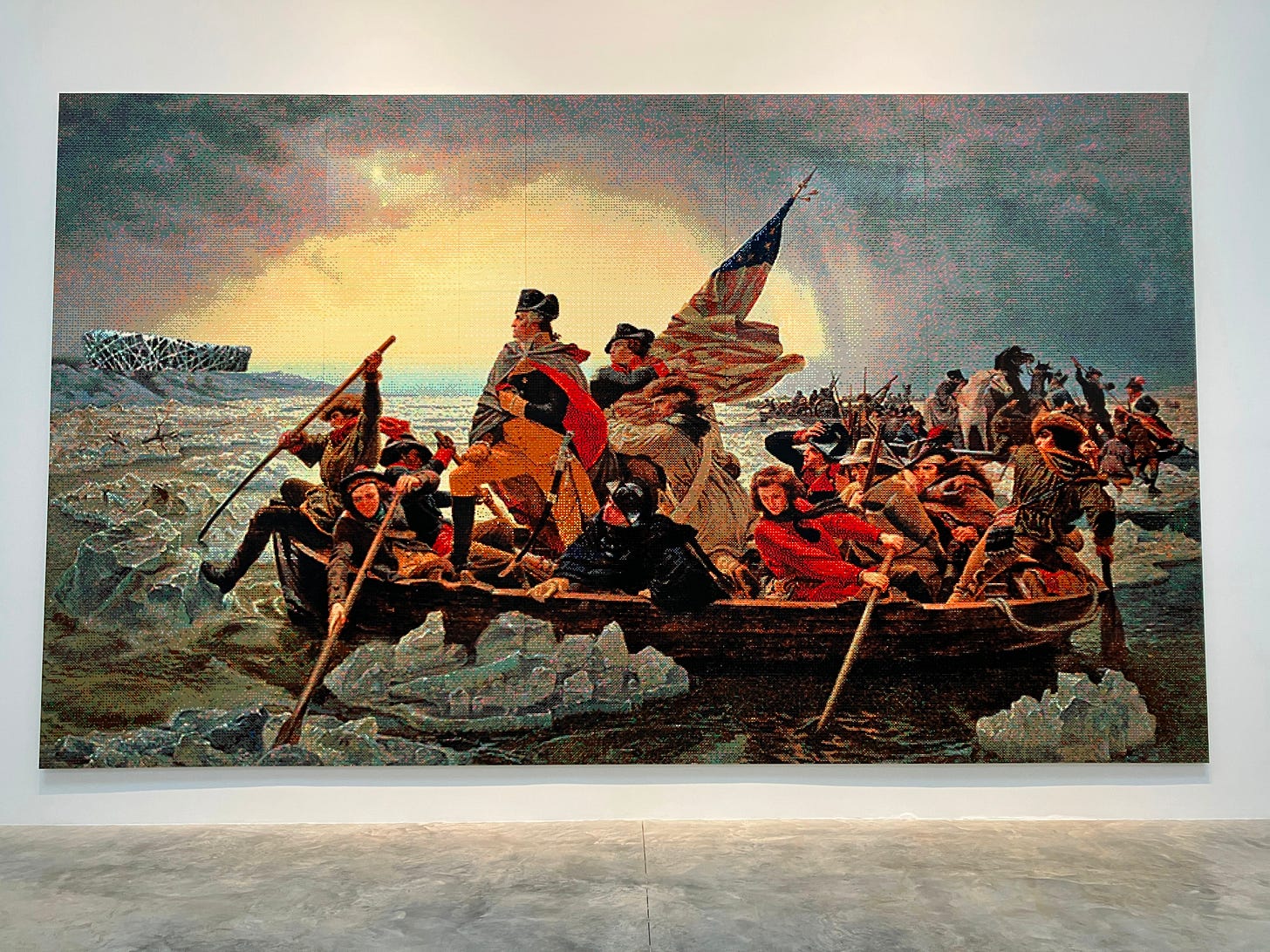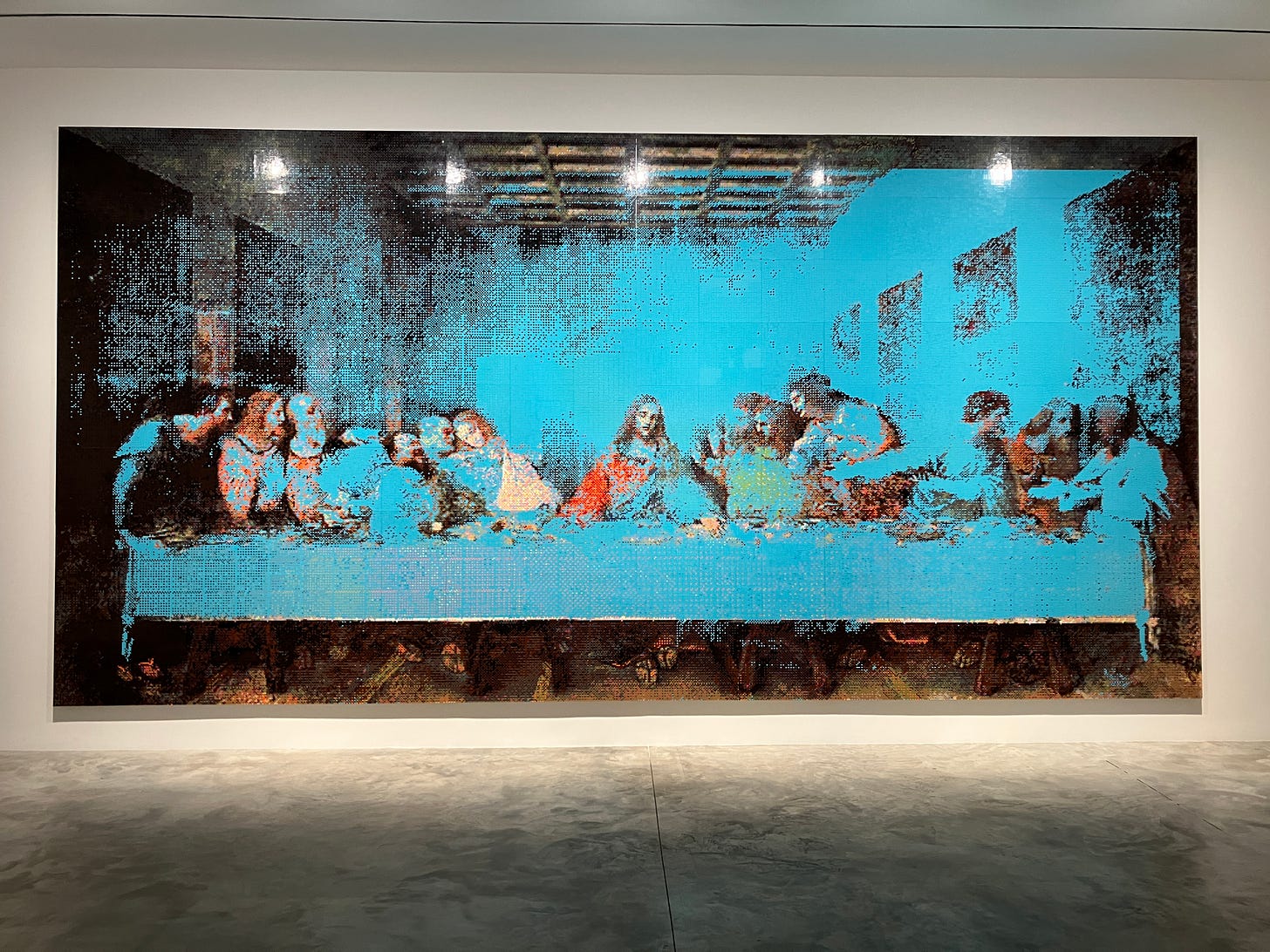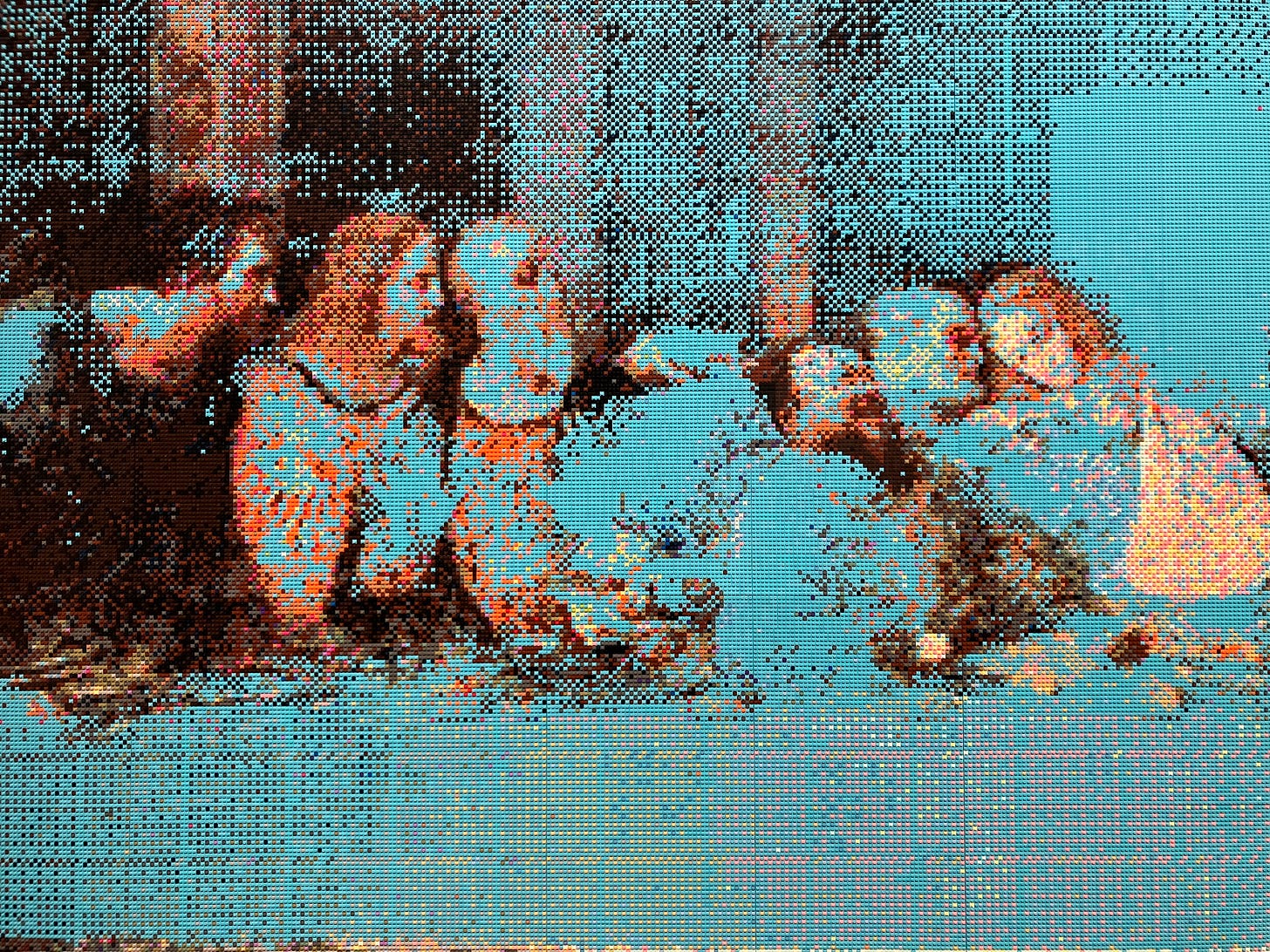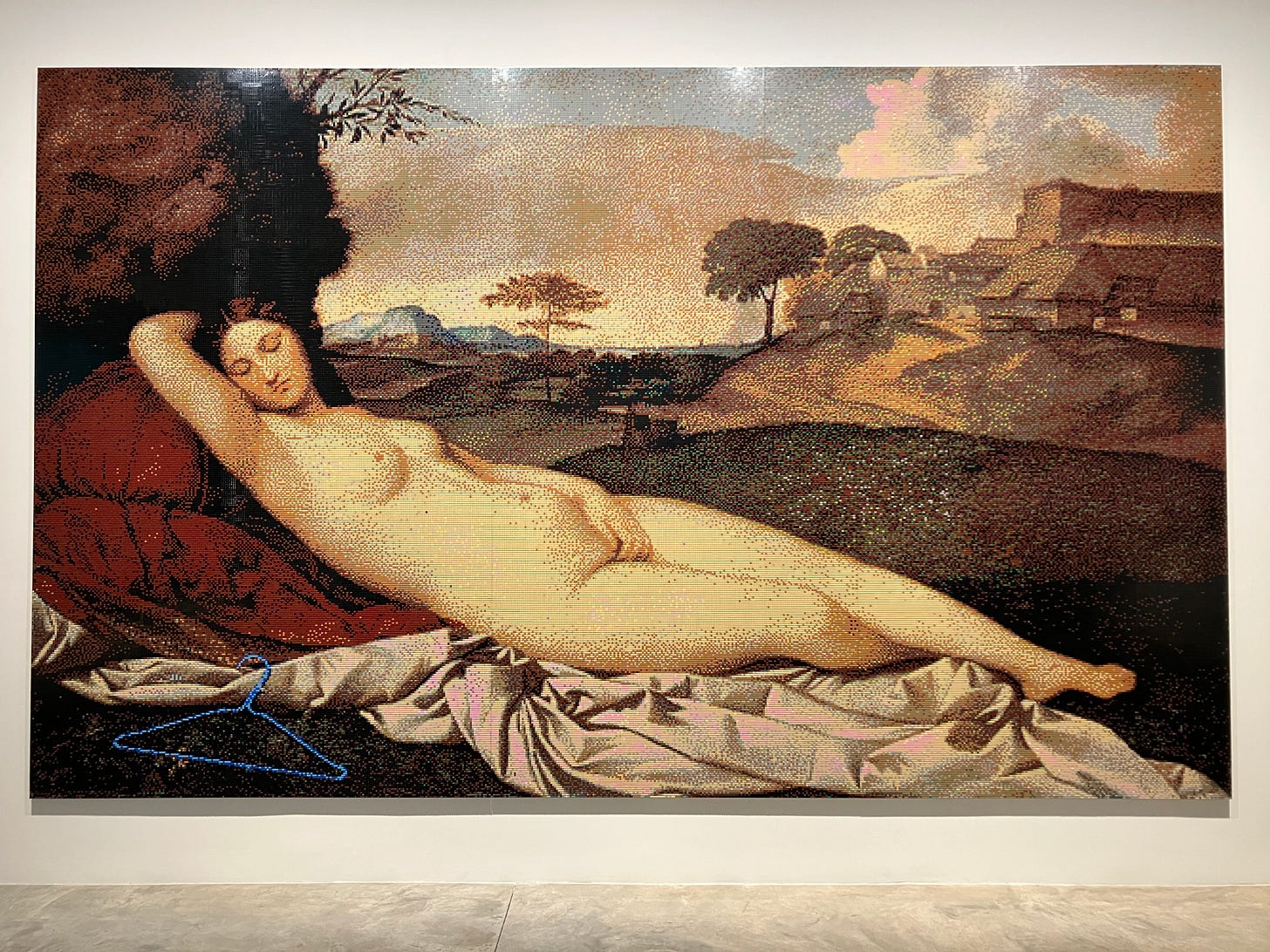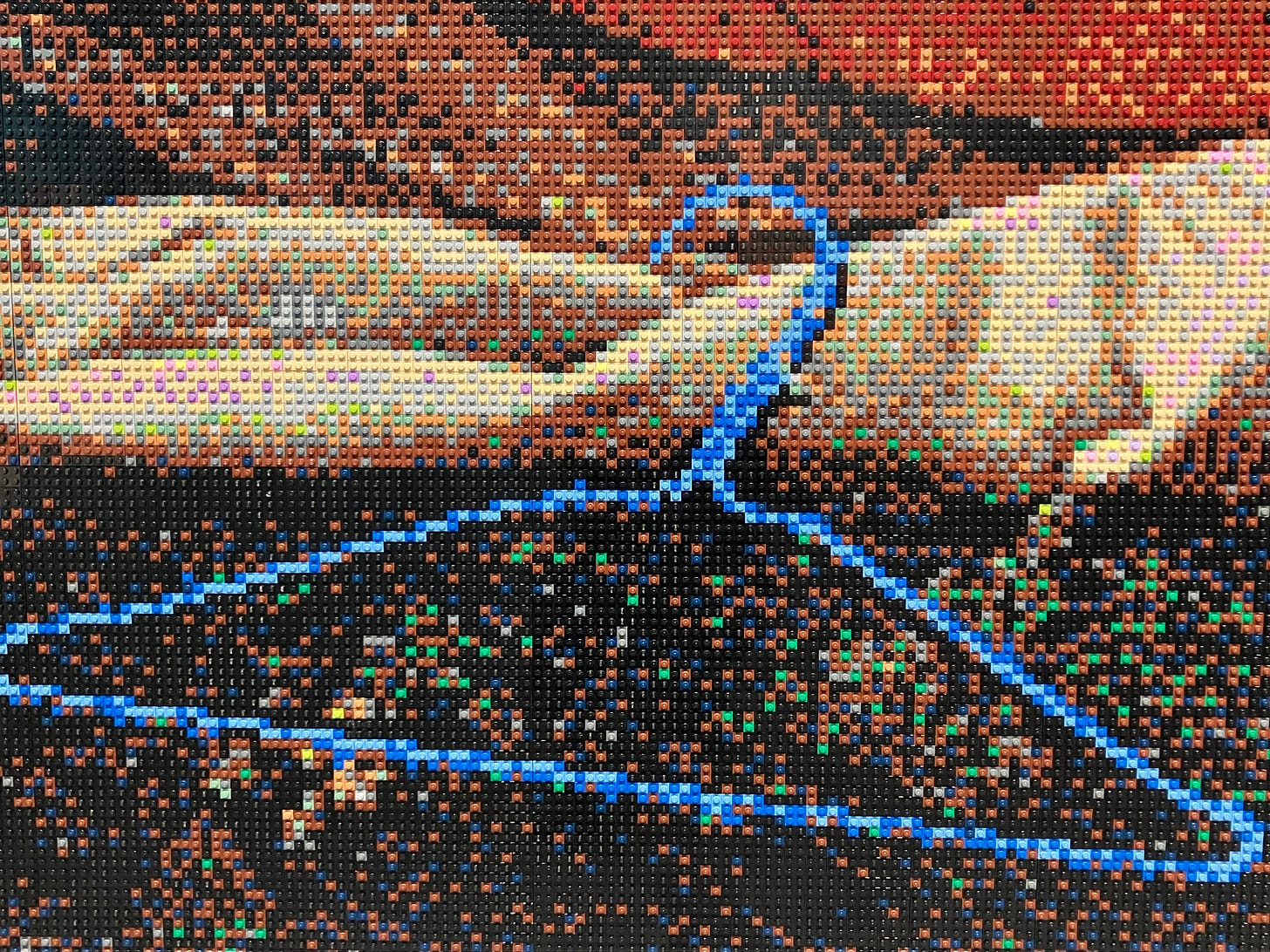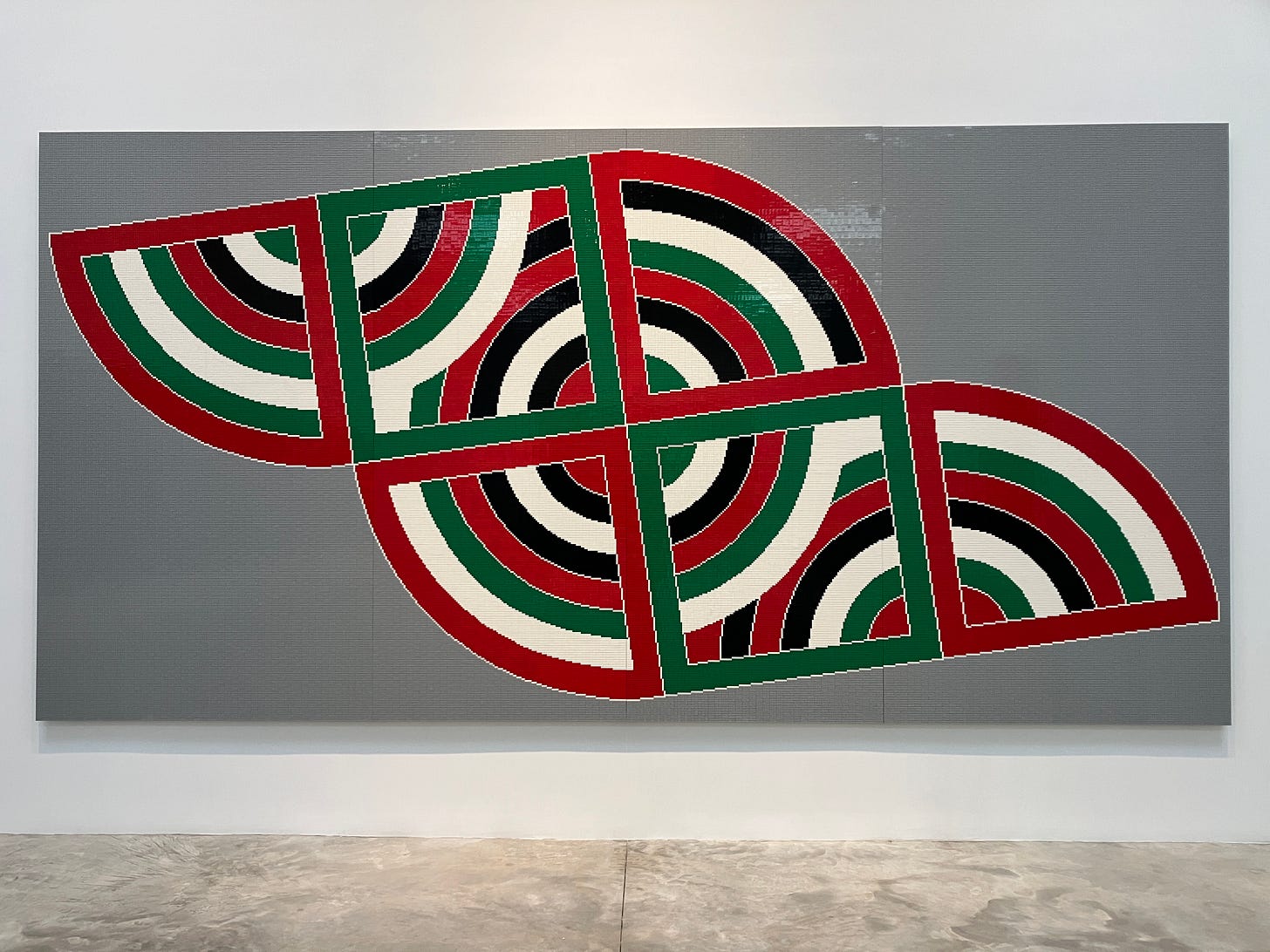
Go see Ai Weiwei’s What You See is What You See on view at Faurschou New York until Sunday, February 23.
The exhibit showcases a dozen works created with LEGO pieces, or WOMA, the Chinese equivalent, reminiscent of mosaics, pixels, and Pointillism. Several of the works are reinterpretations of iconic paintings with visual commentary inserted into them addressing free expression, social/political issues, and international conflicts.
In an interview with writer/art historian Jane Ursula Harris (available on the Faurschou website), Ai says the colorful, plastic bricks epitomize our current age of consumerism, superficial entertainment and media and represent "the new, standardized language of globalization."
Ai placed a deep, black hole into the lower right portion of his 50-foot-long version of Claude Monet’s Water Lilies, made with 650,000 WOMA bricks. The dark pit references the underground home Ai lived in as a child while his father, the poet Ai Qing, was exiled to northwest China to toil at a labor camp. It also references Ai’s 2011 detention when he was held by the Chinese government for 81 days without any formal charge of a crime.
In the main gallery, 90 white helmets are solemnly assembled on the floor. Ai’s porcelain Combat Vases reference Germany’s 2022 offer to send 5,000 helmets to help Ukraine fight Russian forces—an empty promise and a “joke,” according to Kyiv mayor Vitali Klitschko at the time. “The installation reflects on the lives of soldiers and civilians caught in conflict, while criticizing symbolic political gestures,” according to the exhibition notes.
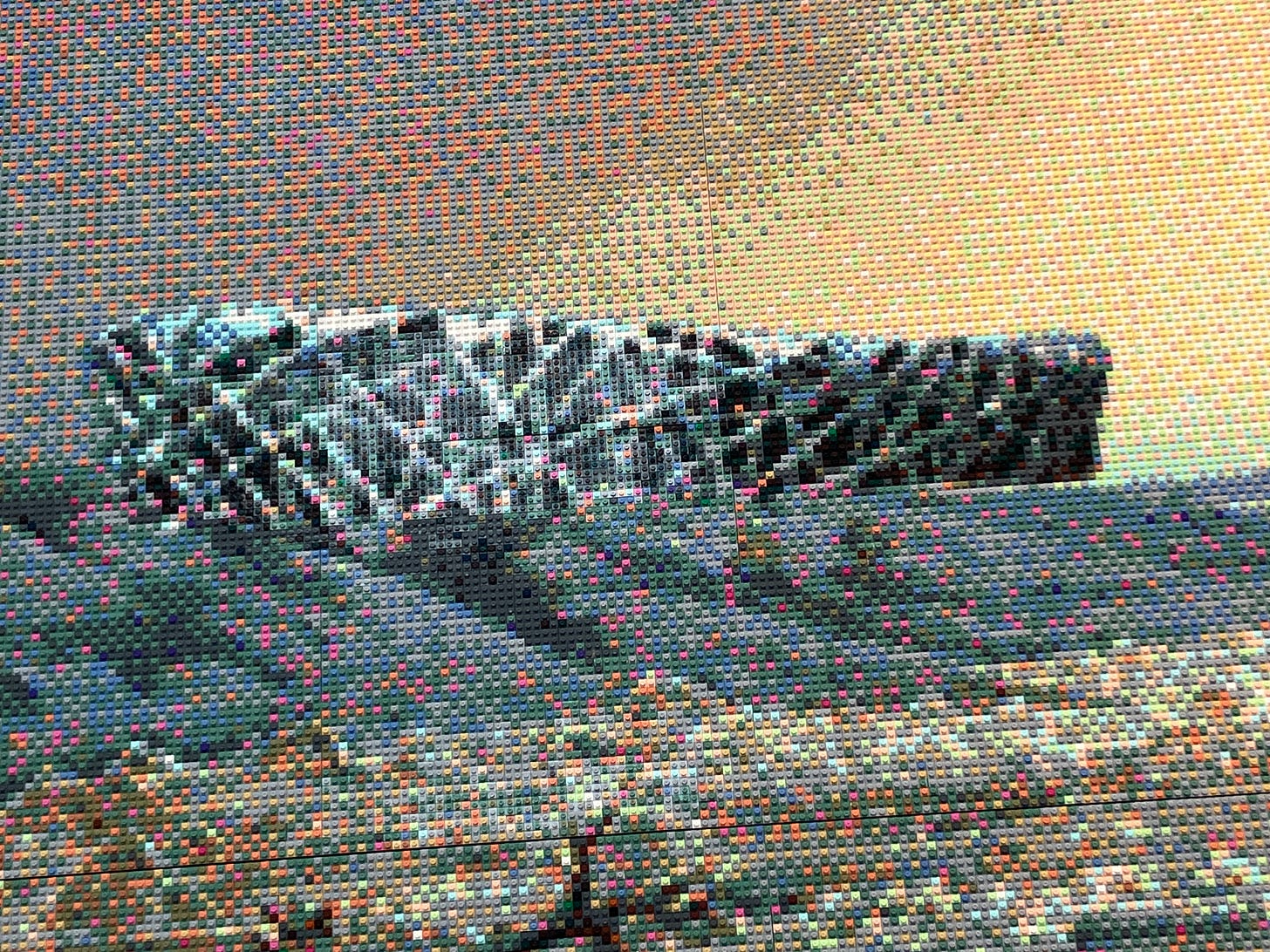
Highlighting distrust of his homeland, Ai placed the famous Bird’s Nest, the stadium he designed for the 2008 Beijing Olympics, into his recreation of Emanuel Leutze’s Washington Crossing the Delaware. He said in a 2022 interview that China used the structure and the Olympics as a “fake smile” to the world after workers were killed during construction of the stadium and scores of residents were displaced for the event. The artist distanced himself from the Bird’s Nest during the Olympics and began focusing more on political activism in his work.
In AI’s WOMA version of The Last Supper, referencing both Leonardo da Vinci’s painting and Andy Warhol’s silkscreen, a grinning Ai replaces Judas among the Apostles at the table. The work questions whom to trust and what information to believe, reflecting on “mass media’s influence and complexities surrounding truth,” according to Faurschou. The artist elaborated in his interview with Harris saying, “…it is very difficult to determine how to respond to today's realities or to anticipate tomorrow's events. Therefore, my most sincere advice is not to believe too firmly in anything.”
In Sleeping Venus with Coat Hanger, the artist inserted a LEGO coat hanger into the lower left corner beside the reclining, nude Roman goddess, making an overt comment on abortion laws and women’s autonomy.
The show’s title, What You See is What You See, references a quote by the late minimalist artist Frank Stella directing viewers to “reconsider how we perceive and interpret both historical and contemporary forms.” In the exhibit’s eponymous WOMA piece the artist reinterprets Stella’s 1967 painting Harran II in red, green, white, and black—the colors of the Palestinian flag—encouraging viewers to look deeper into an artwork to find meaning and to acknowledge the humanitarian crisis in Gaza.
Though the works in the exhibition initially appear playful, they deliver a serious message—art should inspire personal, political, and critical thought and discussion, compelling viewers to "question the forces shaping our world and our own roles within them." Ai’s wise lesson is more crucial now than ever in today’s polarizing world.
Ai Weiwei | What You See is What You See
Faurschou New York
148 Green Street, Greenpoint, Brooklyn
Hours: Thursday – Sunday, 12-7pm
Exhibition closes Sunday, February 23, 2025





